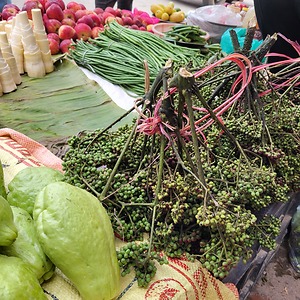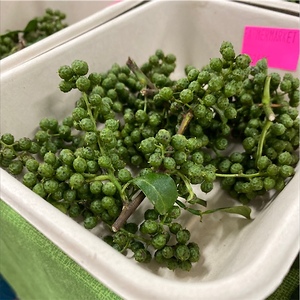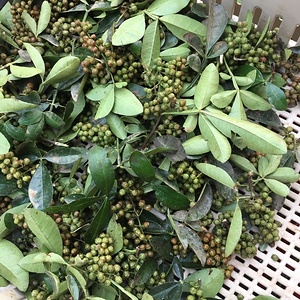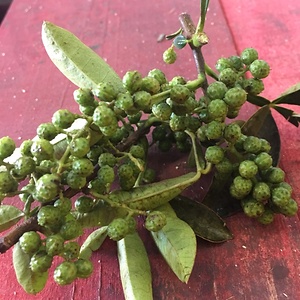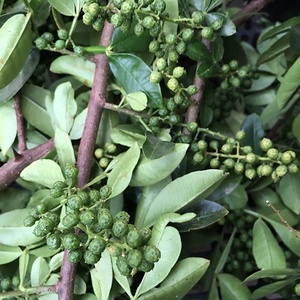


Szechuan Peppercorns
Estimated Inventory, lb : 0
This item was last sold on : 09/09/23
Description/Taste
The Chinese Prickly-ash is a small deciduous shrub that reaches heights of approximately 2 meters. It flowers in the spring and later develops small red berries in the summer that are roughly 5 millimeters in diameter. They crack open as they further ripen, separating the pungent outer husk from the neutral black seed inside. The peppercorns are harvested, hulled and toasted to develop their inherent flavors, and usually sold as a dried condiment either on their own or mixed with other spices and salt. They offer both a complex peppery flavor and a numbing sensation on the palate beginning with bright citrusy notes and finishing with a warm heat leaving the tongue and lips buzzing with an almost anaesthetic feeling.
Seasons/Availability
Szechuan peppercorns may be foraged in the late summer and fall. They are available in the dried form year-round.
Current Facts
Szechuan peppercorns, also spelled Szechwan and Sichuan, are actually the dried husks of the berries from the Chinese Prickly-ash. They are botanically classified as Zanthoxylum piperitum and are of no relation to black pepper, Peper nigrum, though their exotic spice often lends them to similar culinary applications. The bark, seeds and leaves of the bush are also edible, but less pungent.
Nutritional Value
Szechuan peppercorns contain essential oils, flavonoids and alkaloids that give them antibacterial and antifungal properties.
Applications
Szechuan peppercorns should be used as a seasoning best added at the end of the cooking process to retain maximum pungency. It cuts through rich fatty meats like pork and duck and numbs the palate to endure even spicier flavors of chile peppers. Use Szechuan peppercorns in dishes that include ginger, star anise, garlic, chile peppers, black, white and green peppercorns, citrus, sesame, soy sauce, game birds and pork.
Ethnic/Cultural Info
The Szechuan peppercorn plays an important role in the balance of “ma” and “la” (literally “numb and spicy”) in the philosophy of Chinese cuisine. The numbing pungency that the Szechuan peppercorn provides is referred to as “ma”, where the spicy prolonged heat derived from the capsaicin of a chile pepper is called “la”. This common formula is found in Chinese five-spice powder as well as mala sauce which is made from combining Szechuan pepper, chile, oil, garlic and ginger.
Geography/History
Szechuan peppercorns are native to China and parts of Korea and Japan. They were once banned in the US as they were thought to carry citrus canker, but have now been available since 2005. The plants prefer moist with full sun to semi-shade, and may be found growing in temperate climates world-wide.
Recipe Ideas
Recipes that include Szechuan Peppercorns. One



